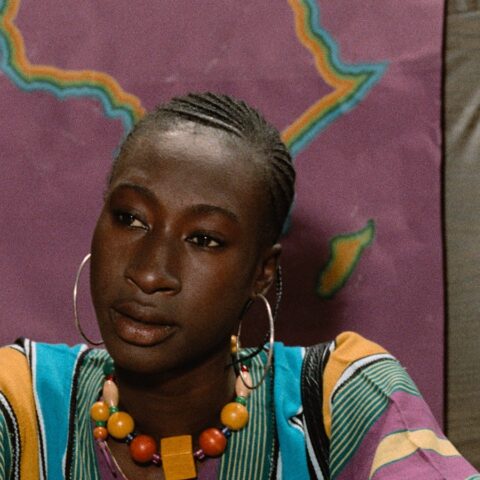A Review of Ethan Michaeli’s new book, The
Defender: How The Legendary Black Newspaper Changed America: From the Age of
Pullman Porters to the Age of Obama
¬
¬
By Todd Steven Burroughs
¬
¬
Saturday, May 28, 2016.
¬
(TriceEdneyWire.com) – Telling the
“biography” of a Black America newspaper, particularly a major one
that served a national audience in its prime, has been seldom tried because it
is a feat worthy of both Hercules and Job. The scanning of thousands of
articles and pages were required, not to mention the juggling of hundreds of
names, places and events.
But when the Black newspaper involved is
spiritually embryoed by a speech by Frederick Douglass, and, once born, crosses
over into historical territory that starts with Ida B. Wells-Barnett and ends
almost a century later with a Chicago politician who becomes the first Black
president of the United States, the story simply must be told.
Ethan Michaeli, a White Jewish man who was a
former investigative reporter and copyeditor for the newspaper in the 1990s,
thankfully, chose to be at the center of a perfect storm of historical
circumstance of which to create this book. He had the enthusiastic support of
the newspaper’s historic owners and executives; the entire historical record of
The Defender achieved and indexed in a major city library; autobiographies,
biographies and memoirs, as well as select unpublished manuscripts and oral
history interviews of several Defender staffers. He also accessed more than a
score of well-researched histories of Chicago’s Black communities.
The Defender book chronicles well the lives of
its heroes: founder Robert S. Abbott; heir and Defender builder John
Sengstacke; journalistic firebrand and civil rights activist Wells-Barnett,
editor extraordinaire Louis Martin and the globe-trotting journalist Ethel
Payne, the first lady of the Black Press. Geography and history collide and
collude well here, with The Defender-the paper that jumpstarted the Great
Migration-seen undoubtedly an essential part of a major city big enough to
house the gangster Al Capone in the 1920s and Harold Washington, the man who
ultimately became the city’s first Black mayor in 1983.
The incredible scope of this book is only marred
by several nitpicks and one major issue. For example, it is possible that many
of the columns Michaeli describes by African-American luminaries such as Mary
McLeod Bethune and W.E.B. Du Bois as Defender products were probably
syndicated. Also, there is very little in this book about the
Chicago-headquartered Nation of Islam or its national newspaper, Muhammad
Speaks, a clear competitor to The Defender in the former’s heyday of the 1960s
and 1970s.
And where is any serious discussion of perhaps
The Defender’s most famous op-ed columnist, a journalist/poet/short story phenomenon
named Langston Hughes and his famous and important fictional character, Jesse
B. Semple? Hughes is only used to make one political point here, and then he’s
gone. The foremost problem: It’s sadly clear-and perhaps inevitable, under the
circumstances spelled out in the book’s sub-title-that the real reason a major
commercial publisher accepted this topic is to tell an “acceptable”
Black liberal story of mainstream Black politics that leads to the happy ending
of Barack Obama’s moderate-at-best presidency.
The historic militancy of the Black
press-particularly the often-contentious power The Defender wielded, a paper
that fought against Marcus Garvey on one end and for martyred Black Panther
Fred Hampton on the other, a paper that the Jim Crow South attempted to ban-is
worth 10 Barack Obamas and (his aide) David Axelrods. It doesn’t need Obama’s
clearly mandatory saga as a wrap-around.
Michaeli’s outstanding achievement needs to be
repeated by interested historians. Needed are similar massive century-spanning
“biographies” of other Black periodicals that held significant power
during Jim Crow and after, including: Ebony/Jet/Negro Digest/Black World; the
Washington, D.C.-based NNPA News Service; The Pittsburgh Courier; The
Afro-American newspaper chain, The New York Amsterdam News and The Norfolk
(Va.) Journal and Guide. If these proposed books can be filled with currently
locked-away documentation, if archives and personal-papers collections can be
made ready and organized and newspapers properly microfilmed (and perhaps
digitized), more extraordinary detail of Black America’s 20th century political
and social history, city by city, can be written from this perspective.
In this digital social media era in which
seemingly every Black person in the world naively – and perhaps more than a
little arrogantly – finds in the mirror an armchair advocacy journalist of 140
characters, this sweeping story of journalistic grit, courage and sacrifice is
extremely important to tell. Defender journalists were risking their lives,
fulltime for low pay, on the street, with the story. They shaped Black history
on the run in print as well as conferring behind closed doors with Black America’s
leaders. Black newspapers like The Chicago Defender represented 20th century
Black America at its very best-socially militant, personally engaged, and
politically powerful.
And Black newspapers publicly exhibited the
wisdom of how to use that power. This book is the story that Black Chicago and
the Black press earned and deserved, through its gallons of historic ink, blood
and sweat, all mixed in to politically form a century.
¬
Todd Steven
Burroughs, Ph.D. is a historian of 20th century Black media. He is also a
former reporter, columnist and editor with the National Newspaper Publishers
Association News Service and a former freelance correspondent with the New
Jersey edition of The Afro-American newspaper chain. An independent researcher
and writer based in Newark, N.J., he is the author of “Son-Shine on
Cracked Sidewalks,” an audiobook on Amiri Baraka and Ras Baraka through
the eyes of the 2014 Newark mayoral campaign. Burroughs is the co-editor, along
with Jared Ball, of “A Lie of Reinvention: Correcting Manning Marable’s
Malcolm X” and the co-author, with Herb Boyd, of “Civil Rights:
Yesterday & Today.”
¬
A Review of Ethan Michaeli’s new book, The
Defender: How The Legendary Black Newspaper Changed America: From the Age of
Pullman Porters to the Age of Obama
¬
Publisher: Houghton Mifflin Harcourt
¬
¬
How A Legendary Black Newspaper Changed America
No Comments currently posted | Add Comment
Comment on this Article
Your Name
Please provide your name
Your Comment
//set data for hoidden fields
//transfer();
var viewMode = 1 ;
//============================================================================
//HTML Editor Scripts follow
//============================================================================
function exCom(target,CommandID,status,value)
{
document.getElementById(target).focus();
document.execCommand(CommandID,status,value);
}
function transfer()
{
var HTMLcnt = document.getElementById(“ctl00_MainContent_txtComment_msgDiv1”).innerHTML;
var cnt = document.getElementById(“ctl00_MainContent_txtComment_msgDiv1”).innerText;
var HTMLtarget = document.getElementById(“ctl00_MainContent_txtComment_HTMLtxtMsg”)
var target = document.getElementById(“ctl00_MainContent_txtComment_txtMsg”)
HTMLtarget.value = HTMLcnt;
target.value = cnt;
}
function hidePDIECLayers(f,p)
{
//e.style.display = ‘none’
f.style.display = ‘none’
p.style.display = ‘none’
}
function toggle(e)
{
if (e.style.display == “none”)
{
e.style.display = “”;
}
else
{
e.style.display = “none”;
}
}
function ToggleView()
{
var msgDiv = document.getElementById(“ctl00_MainContent_txtComment_msgDiv1″);
if(viewMode == 1)
{
iHTML = msgDiv.innerHTML;
msgDiv.innerText = iHTML;
//alert(viewMode);
// Hide all controls
Buttons.style.display = ‘none’;
//selFont.style.display = ‘none’;
//selSize.style.display = ‘none’;
msgDiv.focus();
viewMode = 2; // Code
}
else
{
iText = msgDiv.innerText;
msgDiv.innerHTML = iText;
// Show all controls
Buttons.style.display = ‘inline’;
//selFont.style.display = ‘inline’;
//selSize.style.display = ‘inline’;
msgDiv.focus();
viewMode = 1; // WYSIWYG
}
}
function selOn(ctrl)
{
ctrl.style.borderColor = ‘#000000’;
ctrl.style.backgroundColor = ‘#ffffcc’;
ctrl.style.cursor = ‘hand’;
}
function selOff(ctrl)
{
ctrl.style.borderColor = ‘#9BC1DF’;
ctrl.style.backgroundColor = ”;
}
function selDown(ctrl)
{
ctrl.style.backgroundColor = ‘#8492B5’;
}
function selUp(ctrl)
{
ctrl.style.backgroundColor = ‘#B5BED6’;
}
¬†¬†¬†¬†¬†¬†¬†¬†¬†¬†¬†¬†¬†¬†¬†¬†¬†¬†¬†¬†¬†¬†¬†¬†¬†¬†¬†¬†¬†¬†¬†¬†¬†¬†¬†¬†¬†¬†¬†¬†¬†¬†¬†¬†¬†¬†¬†¬†¬†¬†¬†¬†¬†¬†¬†¬†¬†¬†¬†¬†¬†¬†¬†¬†¬†¬†¬†¬†¬†¬†¬†¬†¬†¬†¬†¬†¬†¬†¬†¬†¬†¬†¬†¬†¬†¬†¬†¬†¬†¬†¬†¬†¬†¬†¬†¬†¬†¬†¬†¬†¬†¬†¬†¬†¬†¬†¬†¬
Size 1
Size 2
Size 3
Size 4
Size 5
Size 6
Size 7
//give focus to the msgdiv… always otherwise save button will not save content.
var mDiv = document.getElementById(“ctl00_MainContent_txtComment_msgDiv1”);
try
{ mDiv.focus();}
catch(e)
{
//alert(‘Invisible’)
}
//if ( <> ‘none’)
//
¬† Send to a friend ¬†| ¬
View/Hide Comments (0) ¬† | ¬




